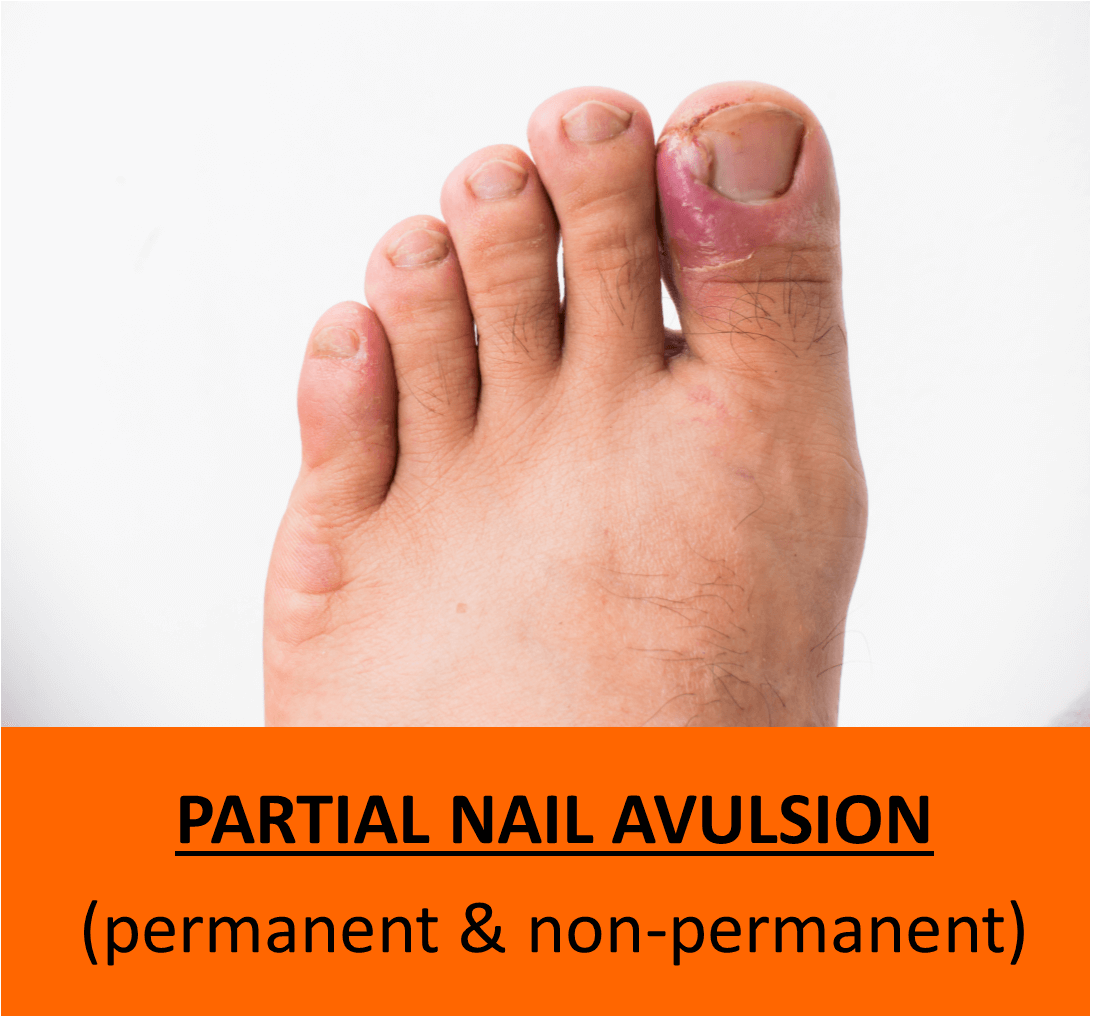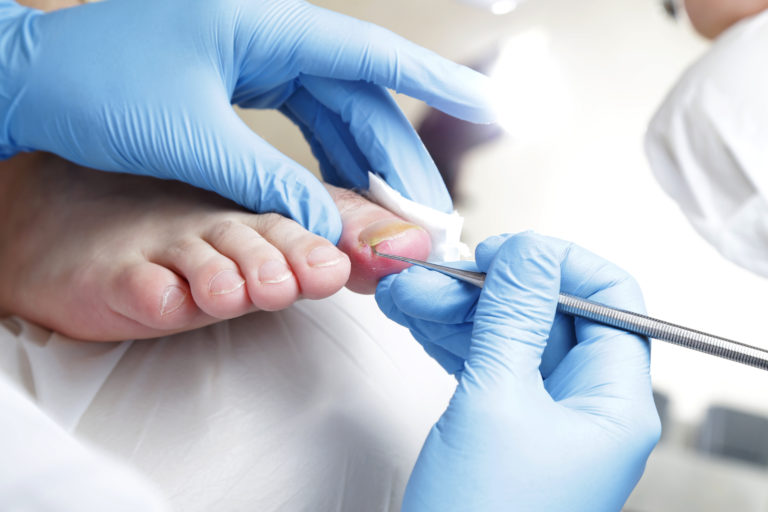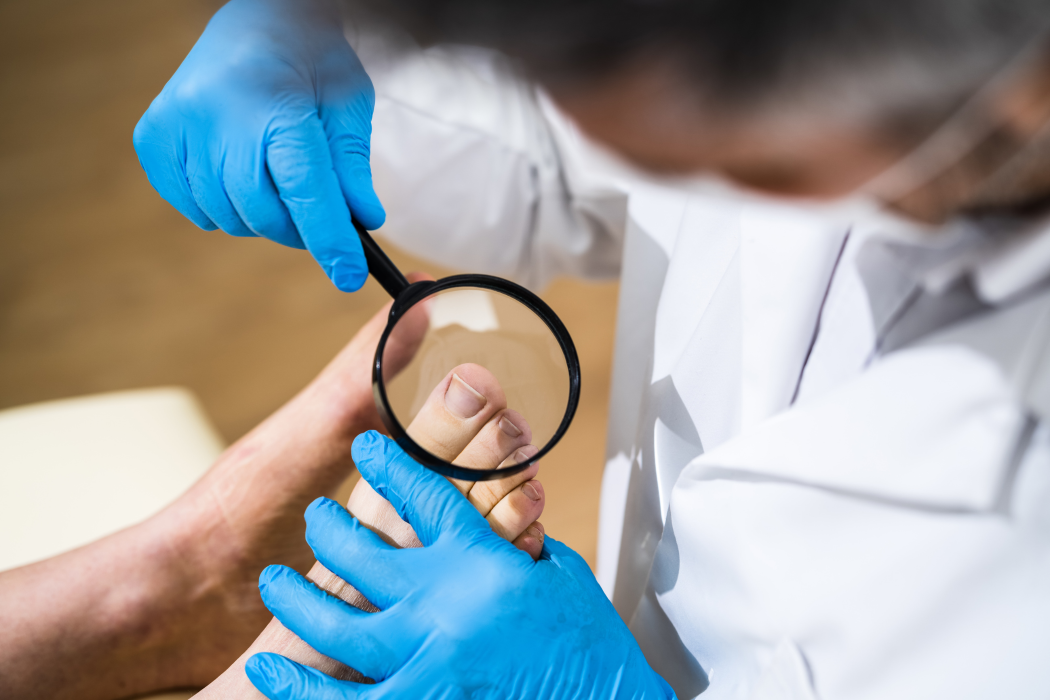

A partial nail avulsion (PNA) provides a professional, safe and effective solution to the problem of frustrating and painful ingrown toenails. This is one of the most common procedures carried out in our clinic.

The procedure removes the small part of the toenail edge that is growing downwards/inwards, piercing the skin and causing your painful symptoms. We see fantastic results from this procedure and have great satisfaction with it, especially as many patients struggle with recurring ingrown toenails for years before having the procedure. Don’t worry – the procedure won’t leave your nail looking unsightly or abnormal. Instead, you’ll just have a very straight nail edge that is only slightly narrower than normal. This may be best described as “oh, I see that now that you’ve pointed it out but otherwise I’d never have been able to tell”. Want to know more about ingrown toenails and what causes them? Click here.
Chemical Matrixectomy
The PNA procedure can be done with or without a step called a chemical matrixectomy, as described below, to destroy the nail growing cells present at the base of the nail. You’ll be able to discuss the best option for you with your podiatrist, but the primary difference is that the offending nail edge won’t grow back when we perform a chemical matrixectomy as part of your procedure, and it most likely will grow back without one. Without a chemical matrixectomy, it is difficult to predict whether the nail will regrow with a straight nail edge that will fix the problem, or if it will continue to become ingrown and cause you pain. We’ll go through everything including your expected outcome in the consultation to see if a PNA is the best option for you. If the nail has become severely deformed or if removing side sections would achieve an unsatisfactory result, you may choose to have a Total Nail Avulsion (TNA).The benefits of a PNA include:
- The procedure is done simply in-clinic
- The total appointment time typically doesn’t exceed 60 minutes (with the procedure time typically around 20 minutes)
- The procedure is performed under local anaesthetic so is pain-free
- You do not need to take any additional time off work/school following the procedure and can go home immediately
- You do not need any special boots or braces while the toe heals
- The procedure causes very little post-procedure discomfort, however, painkillers can be taken should discomfort arise
- We dress your toe, provide you with a take-home dressing pack and re-dressing instructions
- We monitor your progress to ensure it is healing well

The Procedure
- We first inject the toe with a common local anaesthetic using the thinnest needle possible for your comfort
- When the area is numb, we will perform the procedure in which a very small piece of nail along the edge that is growing into the skin is cut away and is pulled out
- If you already have an infection, it will be surgically drained and any overgrown tissue is cut away
- Where a chemical matrixectomy is part of the procedure, we apply the chemical (phenol) to the exposed nail base, before flushing it away and neutralising the area
- We dress the toe with a number of dressing materials for optimal healing


.png)
